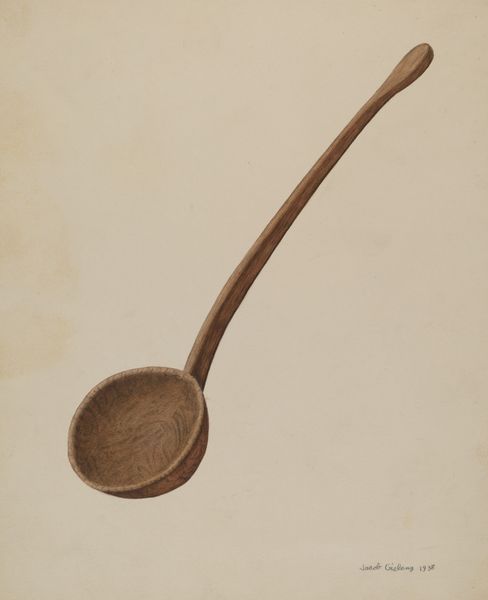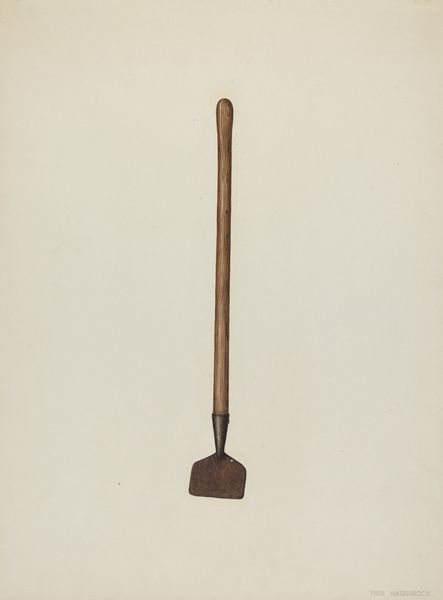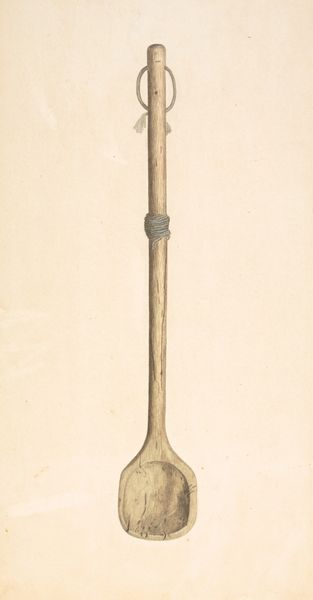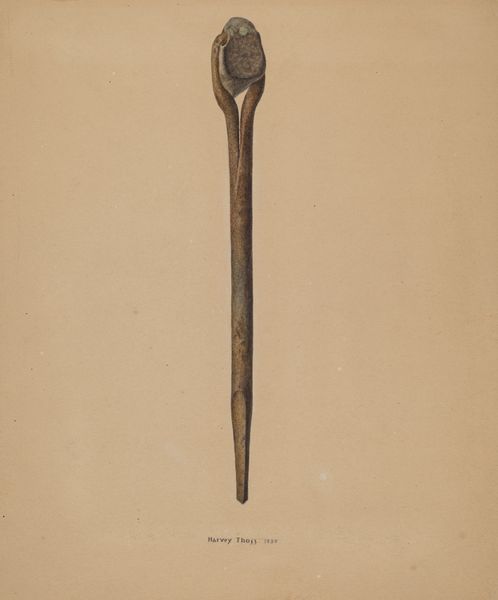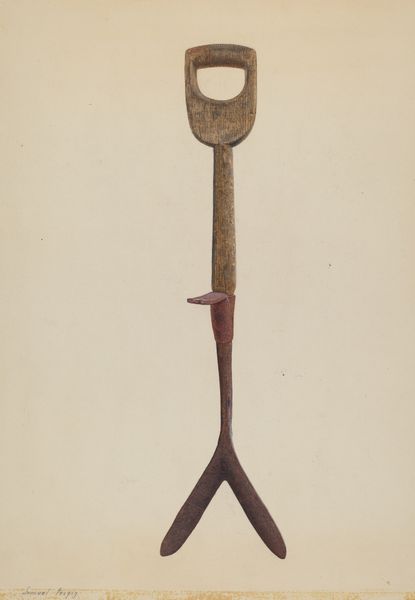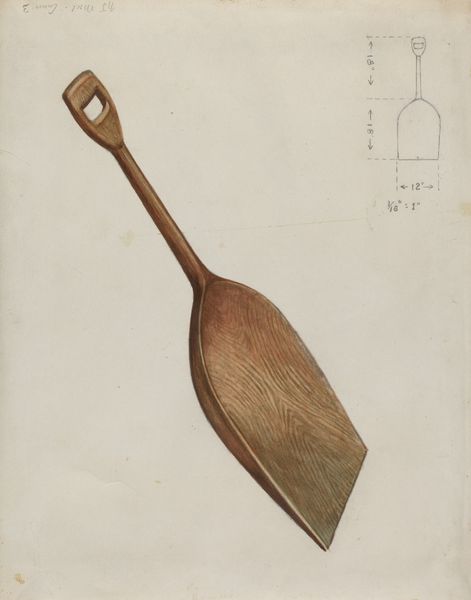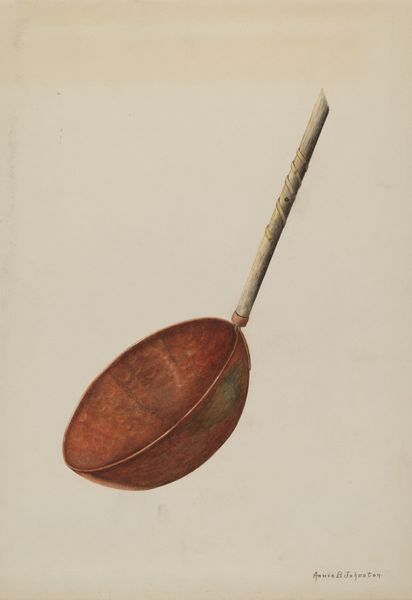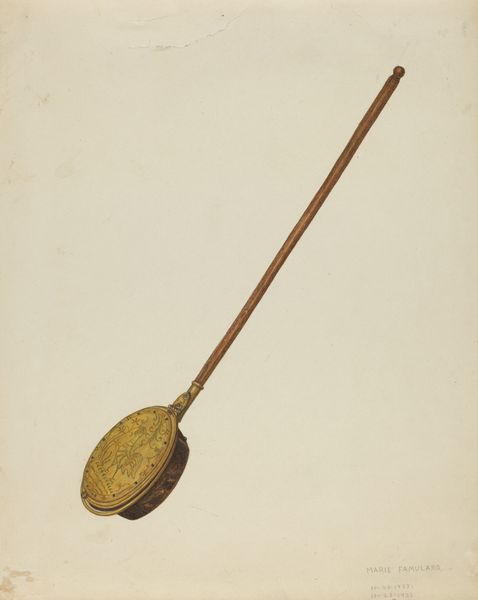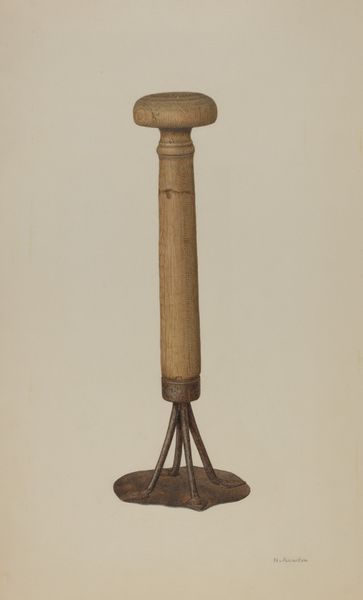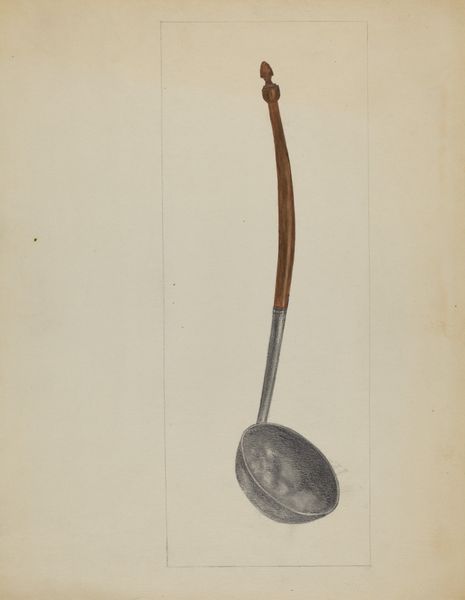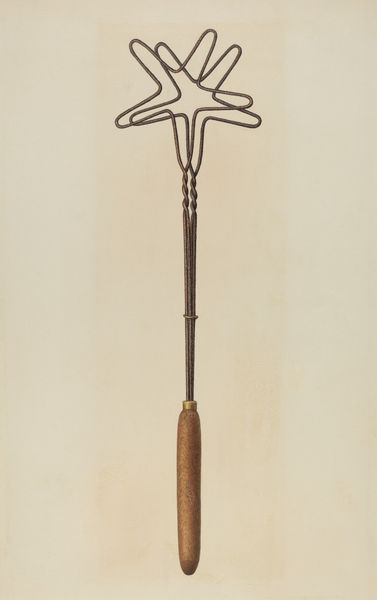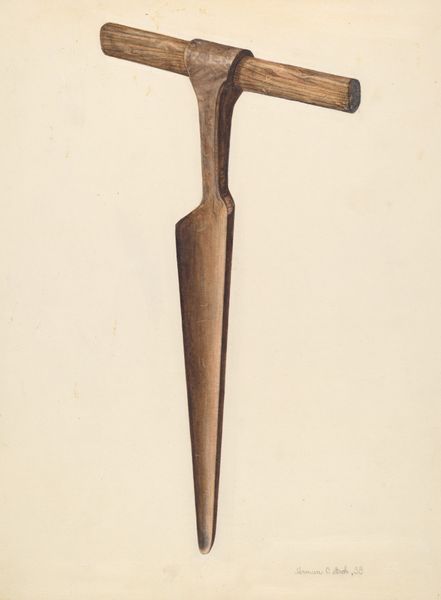
drawing, charcoal
#
drawing
#
charcoal drawing
#
ceramic
#
charcoal
#
modernism
#
watercolor
#
realism
Dimensions: overall: 35.5 x 24.2 cm (14 x 9 1/2 in.) Original IAD Object: 12" long
Copyright: National Gallery of Art: CC0 1.0
Editor: So this is Fred Hassebrock’s "Turpentine Dip Iron" from around 1940, rendered in charcoal and watercolor. It's stark, almost like a technical drawing. I'm struck by how isolated the tool is; it feels both ordinary and significant. What catches your eye in this piece? Curator: The isolation, as you mentioned, forces us to confront the object itself, to really *see* its construction. This isn't about aesthetic beauty, but about understanding the tool's materiality and function within a specific labor process. Consider the labor involved in turpentine production during that period – brutal, dangerous work. Does this drawing romanticize that labor, or simply present the tool as an object of interest, devoid of social commentary? Editor: I hadn't thought about the labor involved. Seeing it now, it seems to highlight the distance between the finished product we might buy and the harsh realities of its creation. But why create art of such a commonplace object? Curator: Precisely! Its creation is precisely what calls attention to that kind of divide. It asks us to consider the value we assign to objects based on their aesthetic appeal versus their origins in material production. Think about how the materials themselves – the charcoal, the watercolor – become agents in representing another material: the iron of the dip iron. What transformation do you observe from iron, charcoal, and watercolor? Editor: I guess it transforms the original labor into… art, in a sense, distancing us further? Almost like it's archiving labor. Curator: And in archiving it, making it available to contemplation from our contemporary vantage. Is this work an acknowledgement or critique of its own medium? How does Hassebrock’s drawing challenge traditional notions of art and labor by elevating a utilitarian object to a subject worthy of artistic representation? Editor: That’s a really interesting way to think about it. I see it now less as a simple drawing and more as a commentary on labor, materials, and how we assign value. Curator: Exactly! Recognizing this prompts a further analysis into art's power to elevate everyday objects. What additional information could we extract with that insight?
Comments
No comments
Be the first to comment and join the conversation on the ultimate creative platform.
